Magic has always been a mysterious way to achieve goals and was often thought to make dreams come true. In the case of the ancient Egyptian civilization, it was seen as a way to communicate with the gods, ask for good luck, and also a way to interact with the spiritual world.
Heka, the magic of ancient Egyptians, continues to be one of the most mysterious and fascinating magical practices in the world. The rituals usually took place in monumental temples without an audience. However, artifacts of everyday life suggest that regular people also practiced their own style of magic, which they believed brought them closer to the gods and personal desires.
Mysterious Practices Outside Ancient Temples
The first information about ancient Egyptian magic comes from about 4500 BC. Magical amulets which were created in those times stayed in use until approximately the 5th century AD, and were revived again in modern times. There are also some written spells which have survived until now on reliefs, paintings, papyri, etc.
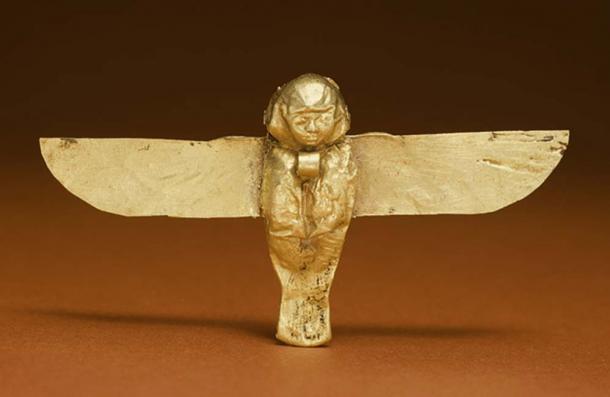
This golden Ba amulet from the Ptolemaic period would have been worn as an apotropaic device to ward off evil or bring good luck. ( Walters Art Museum )
Many objects related to Heka magic were discovered in tombs. Due to the impressive number of well-preserved ancient graves, there are lots of interesting inscriptions referring to magical practices too. The name Heka comes from a god who is one of the oldest deities of ancient Egypt. Heka was presented in human form, which made people feel closer to him than other deities.
- Jean Eugene Robert-Houdin, The Father of Modern Magic Who Stopped a Revolt with His Abilities
- Maat: The Ancient Egyptian Goddess of Truth, Justice and Morality
- Tomb Curses of Ancient Egypt: Magical Incantations of the Dead
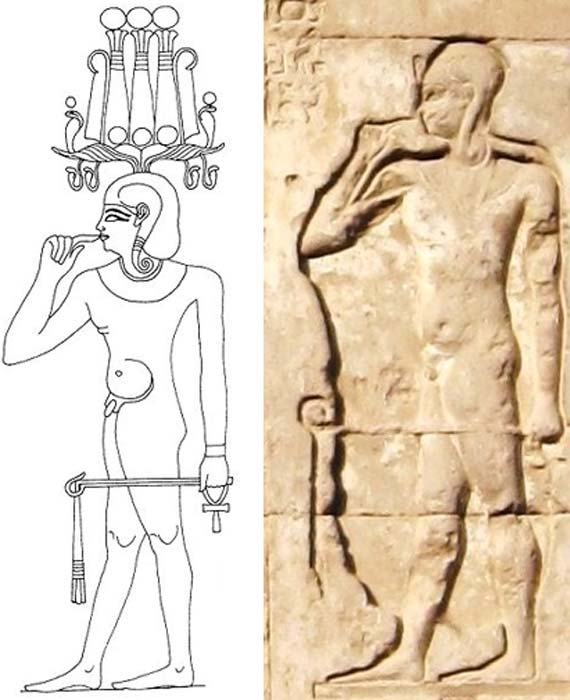
A drawing ( Public Domain ) and relief (Olaf Tausch/ CC BY 3.0 ) of Heka-pa-chered (Heka the child).
According to Geraldine Pinch:
''Heka could be identified with the creator himself, particularly when the latter appeared in child form to symbolize the emergence of new life. Heka is also described as the ba (the soul or manifestation) of the sun god. He was the energy which made creation possible and every act of magic was a continuation of the creative process. Some Egyptian deities were merely personifications of abstract concepts or natural phenomena and were never the focus of cult worship or private devotion. No major temples were built for Heka, but he did have a priesthood and shrines were dedicated to him in Lower (northern) Egypt. There was also a goddess called Weret Hekau 'Great of Magic'. Originally this was just an epithet, applied to a number of goddesses. As a goddess in her own right, Weret Hekau was usually shown in cobra form. She was one of the goddesses who acted as a foster-mother to the divine kings of ancient Egypt and she was the power immanent in the royal crowns. The snake-shaped wands used by magicians probably represent her.''
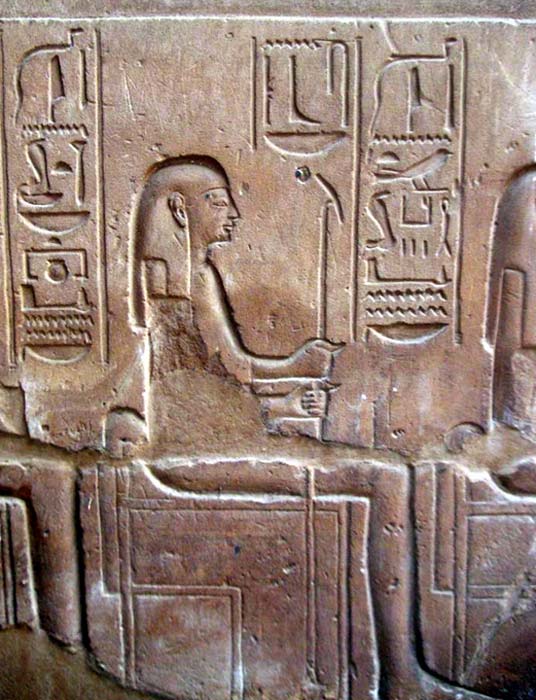
A relief representing Weret-hekau. From the reign of Ramesses II ( CC BY 3.0 )
People believed that magic could be cast in specific places like temples and shrines, but also in nature. Despite the modern misconception, it is important to note that ancient Egyptians didn't see hieroglyphs as magical tools in themselves, they were also letters. The misinterpretation of the use of hieroglyphs in ancient Egypt is one of the biggest errors in modern understanding of this craft.
Magical rituals were performed in temples every single day. There were three types of magic: everyday magic, typical temple magic, and magic related to an individual’s life. They were strongly related and influenced one another.
Heka and Akhu
The most common word for magic is '''heka'' – meaning one of the forces used by the main creator deity to make the world. According to Egyptians, there was no chaos in the beginning, just darkness. Only Nun and the dragon Apep existed. Apep was responsible for chaos, but the world was created out of chaos in the perfect divine order. It is also related to the goddess Maat, who is connected to harmony, truth, and justice. This understanding of the world’s creation was the basis for ancient Egyptian magic.
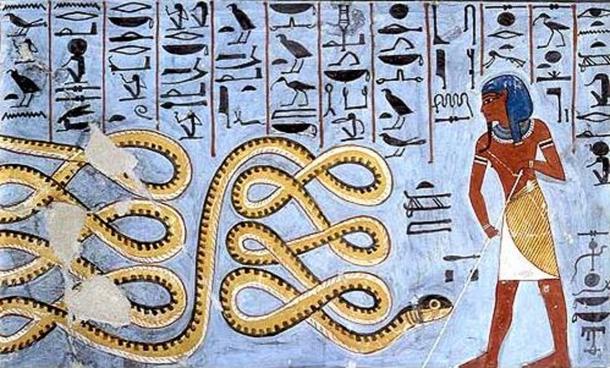
Ancient Egyptian art depicting Apep being warded off by a deity. ( Public Domain )
There is one more word in the ancient Egyptian language which describes magical powers – akhu. It means ''spells'' or ''sorcery''. Akhu was used by the stars and deities, it was not good nor bad. However, the meaning of heka is better known. Every single magical being (like gods or, for example dwarves) had their own heka. According to Sir James Frazer, magic was a manipulation of supernatural beings by a human who hoped that the correct behavior, ritual, words, or actions would bring a desired result. In Egypt, it was also connected with religion.
Crossed Cultures and Time
- Magic and superstition in ancient Egypt
- Top Ten Ancient Egyptian Discoveries of 2014
- Sky Religion in Ancient Egypt: Temples and Magick - Part I
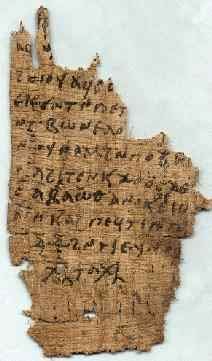
Magical spell written in Coptic. ( reshafim.org.il)
The greatest ''magicians'' were priests from the temples. However, some people also used magic for their own purposes. One example of Heka that has survived until now is a spell created by a priest named Hor. He lived in the 2nd century BC and cast a spell which went as far as threatening the gods with sacrilegious acts and cosmic catastrophe. When rituals were related to the calendar and specific seasons of the year, magic was performed to support people during crisis and may have been similar to Hor’s spell.
Renaissance of Heka
Ancient Egyptian magic has never been fully forgotten. It survived in not only Egyptian, but also Greek and Roman ancient texts. Romans especially saw the ancient Egyptian rituals as a way to reach the gods and a path to achieve their dreams.
In the 20th century, after the creation of a new way of witchcraft and paganism called Wicca, the topic of magic from ancient Egypt became even more popular. Nowadays, some people have turned to the ancient masters of magic once more.
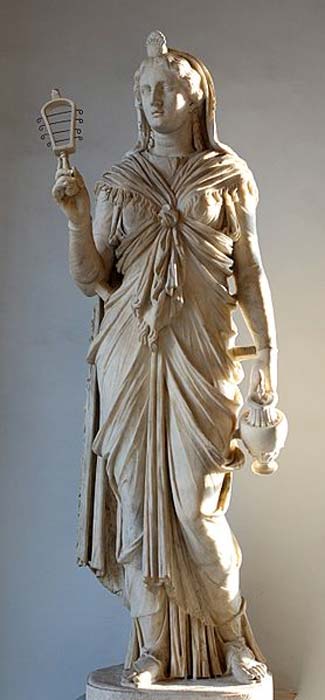
A Roman statue of Isis holding a sistrum and an oinochoe. ( Public Domain )
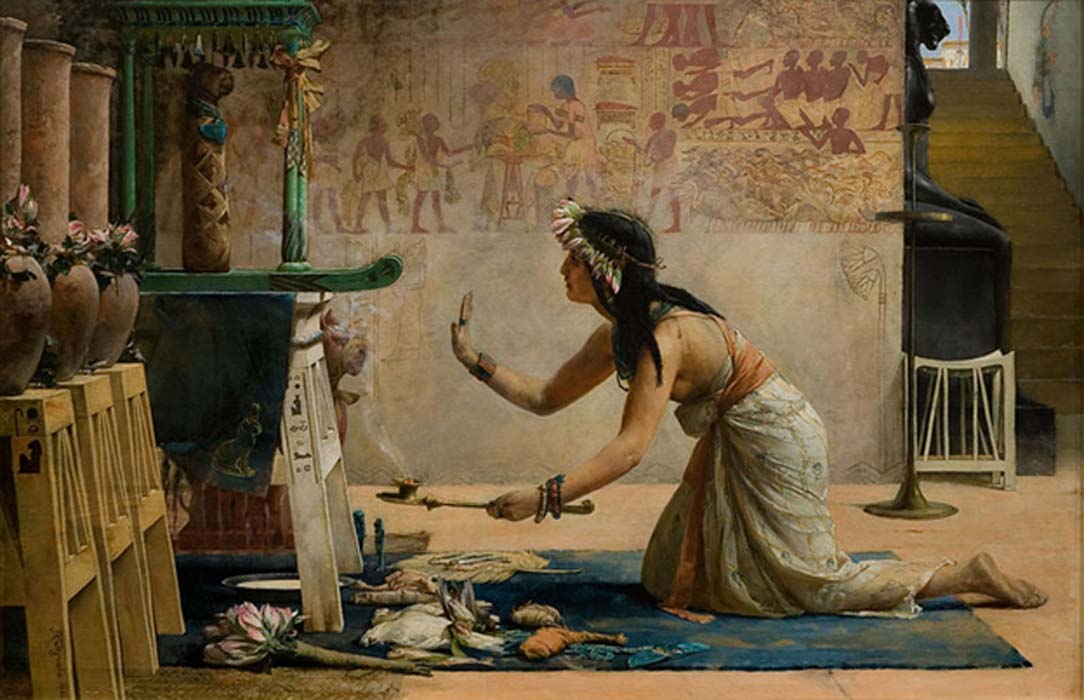
No comments:
Post a Comment